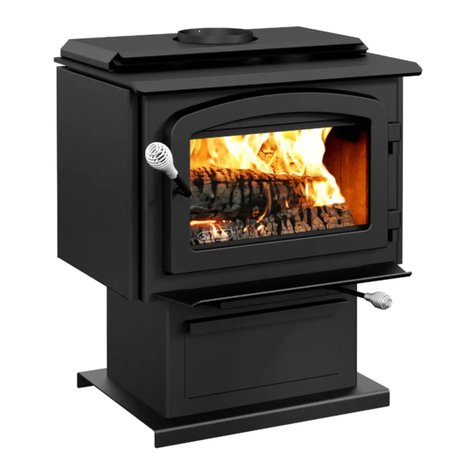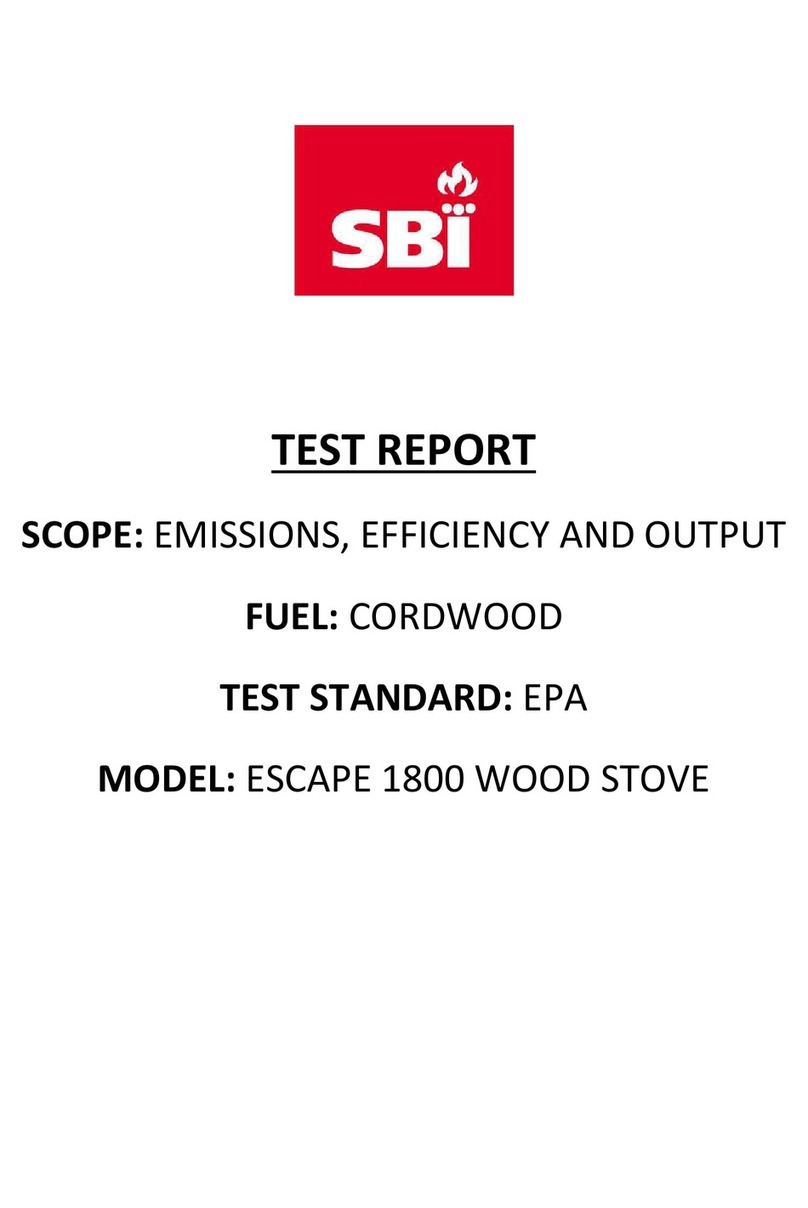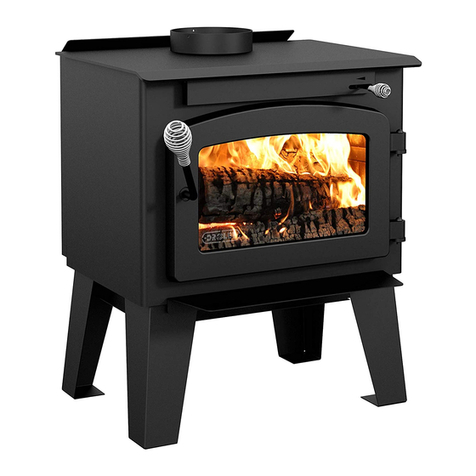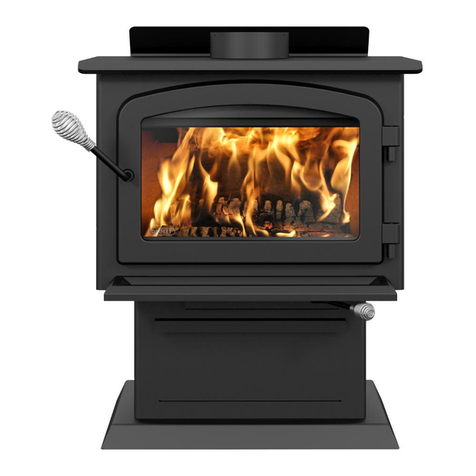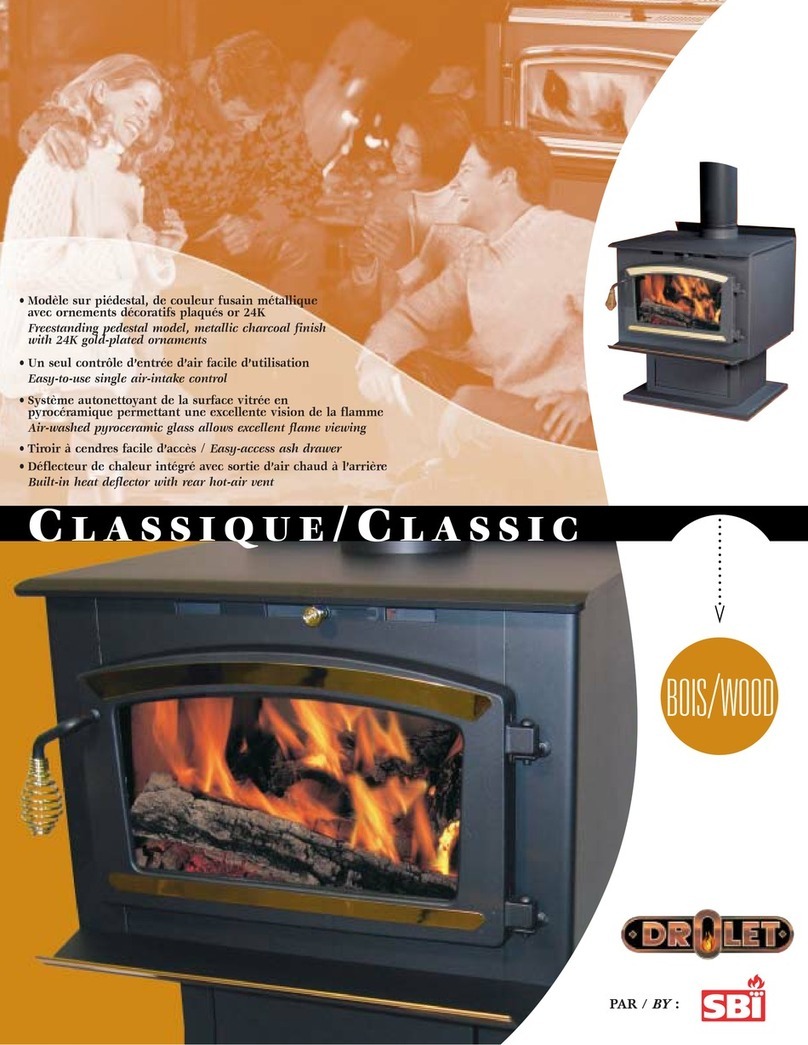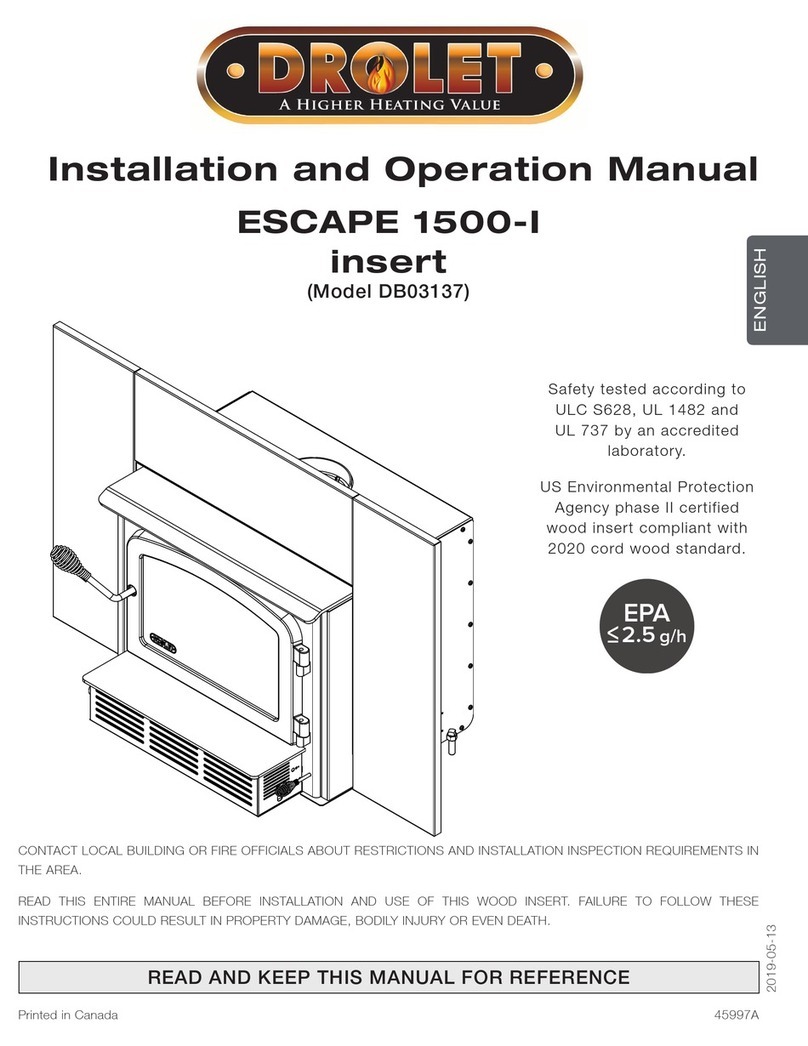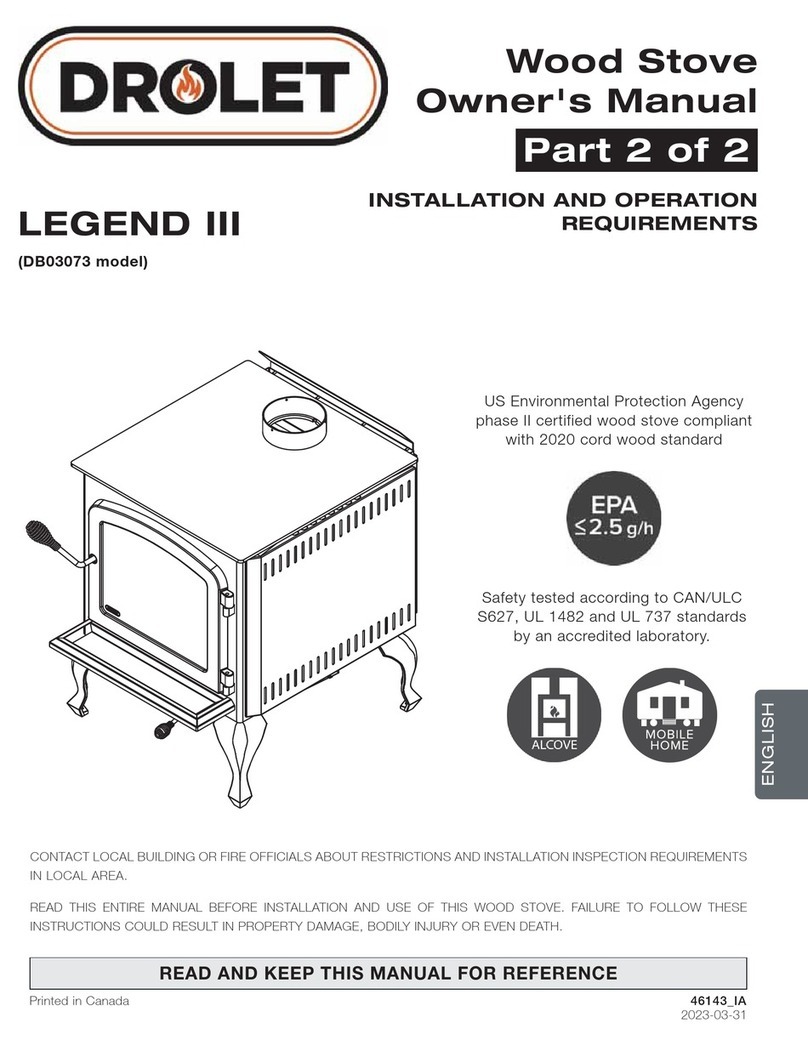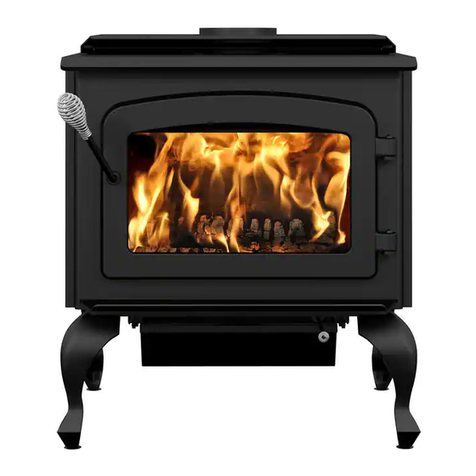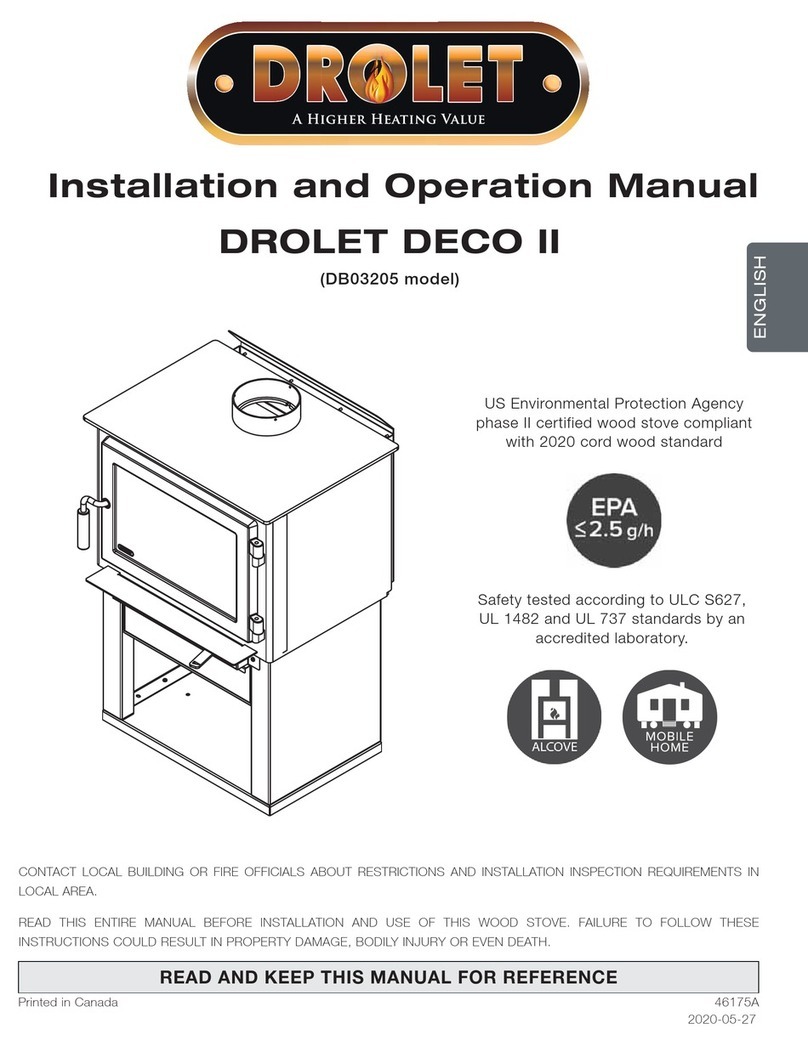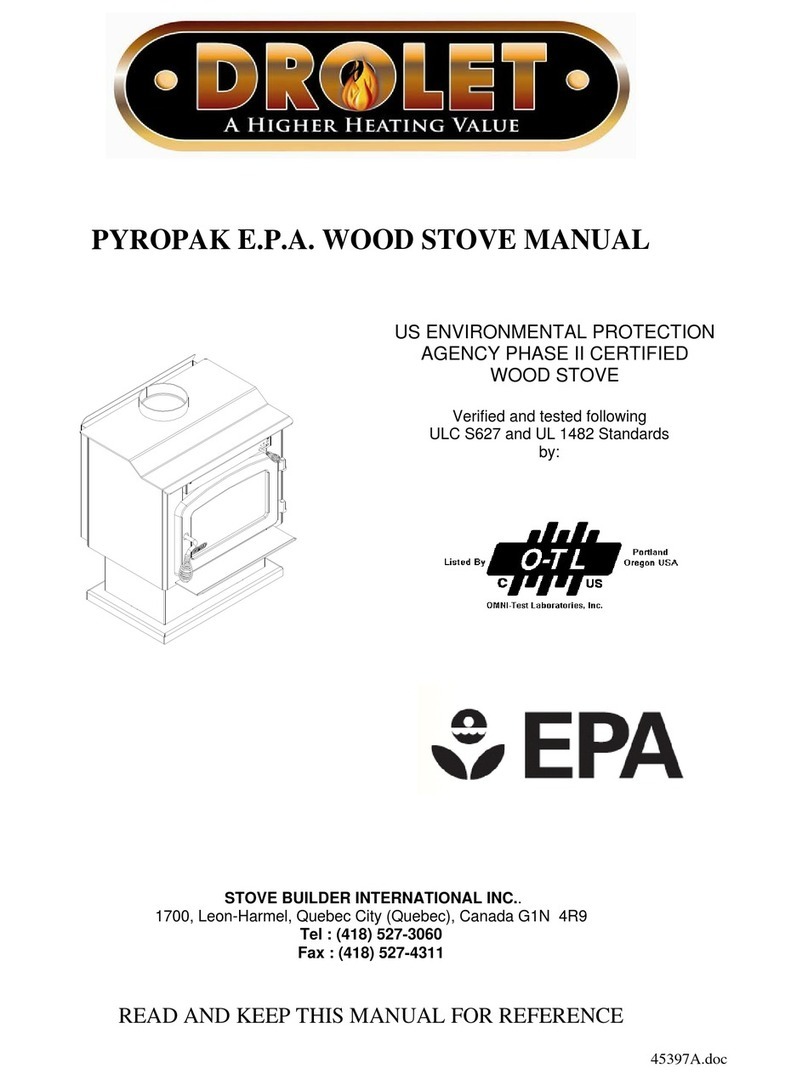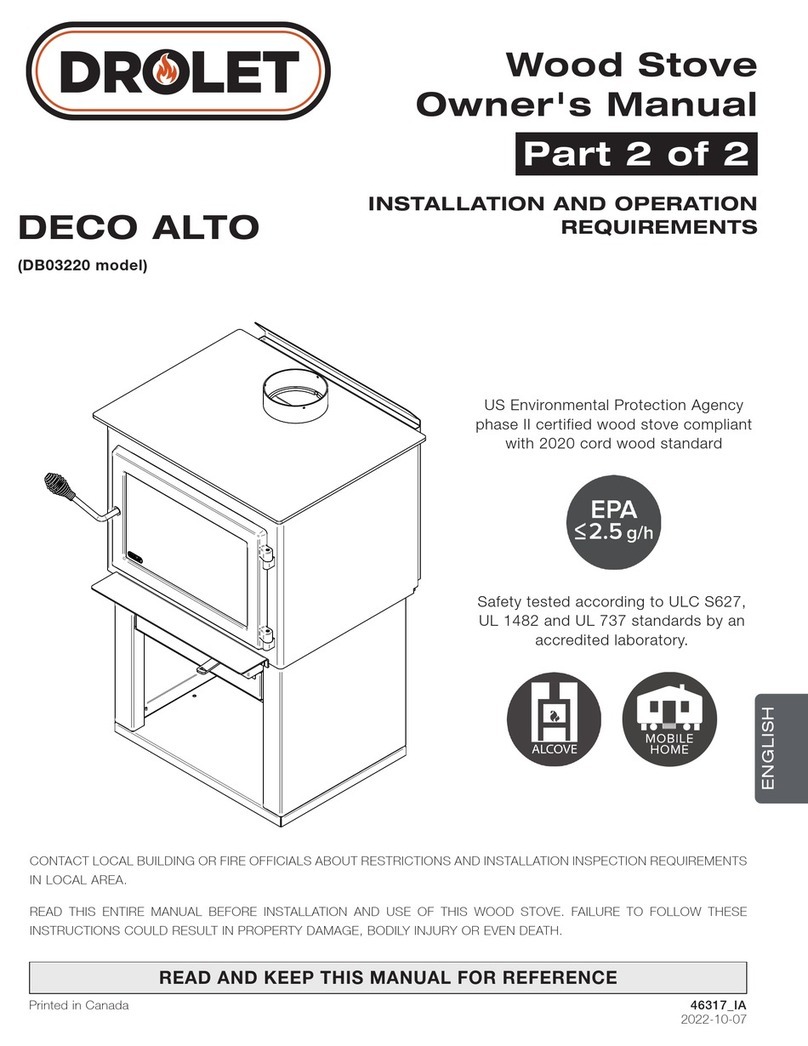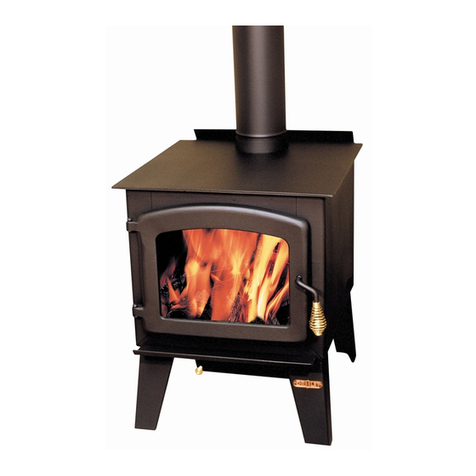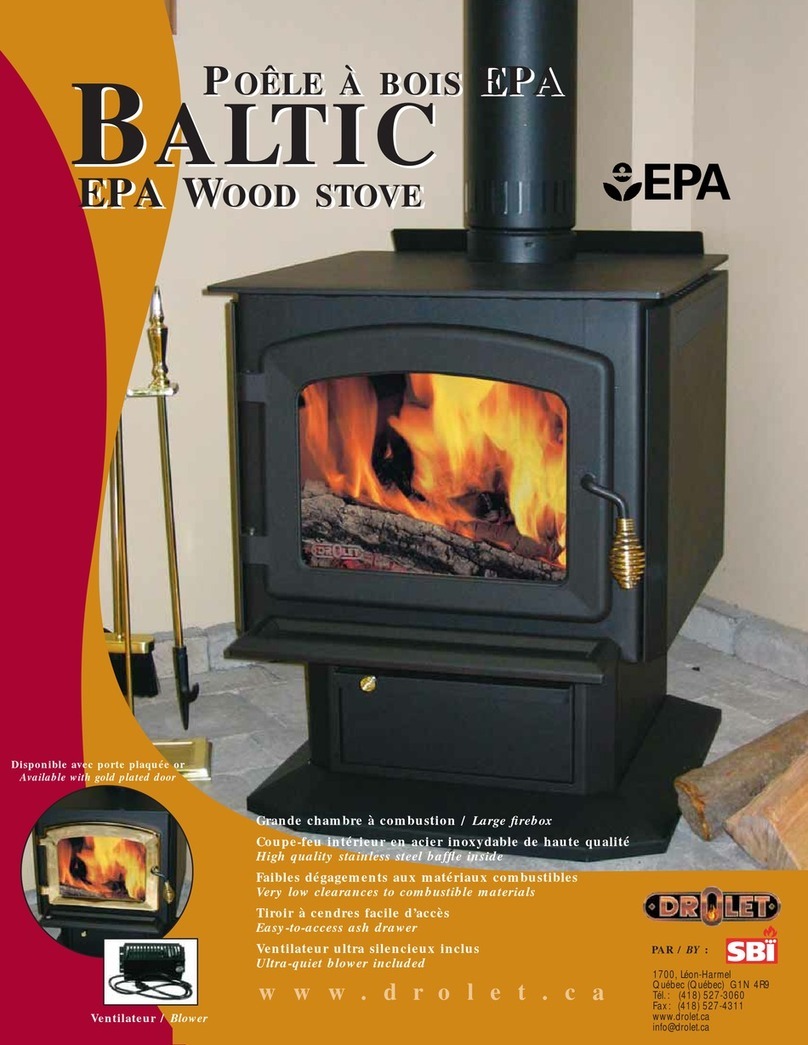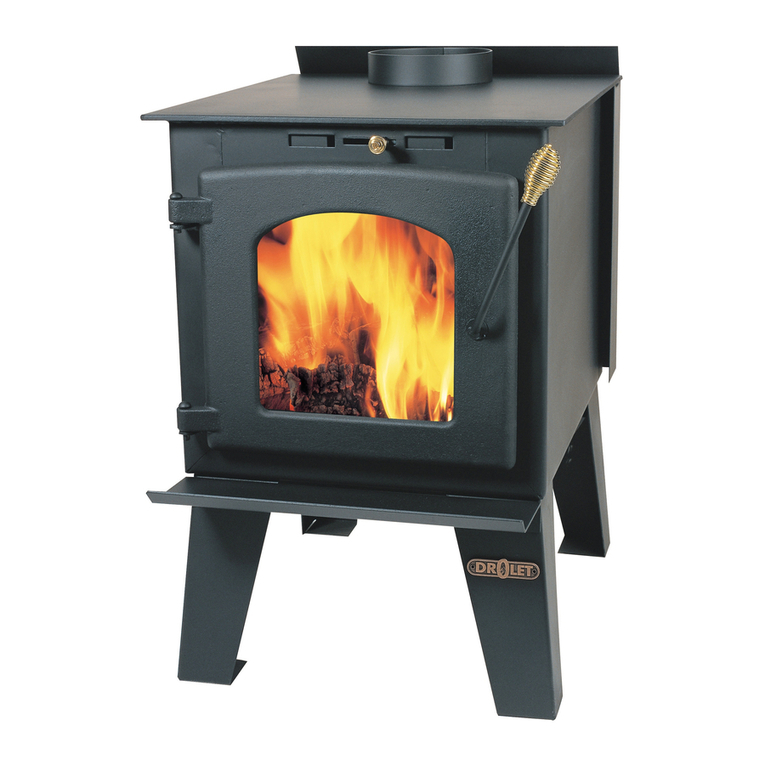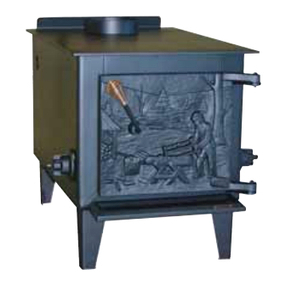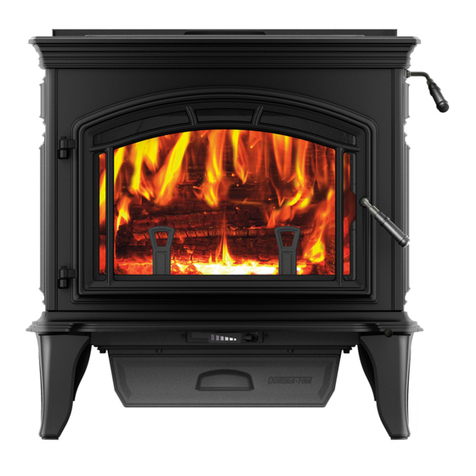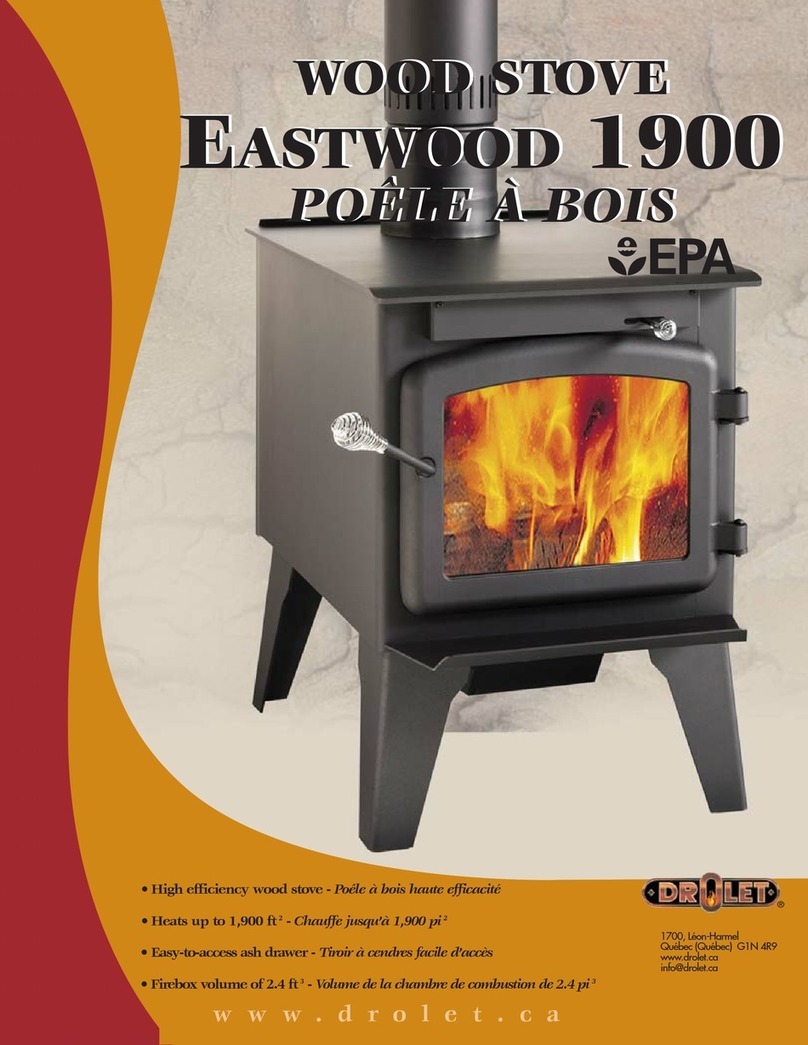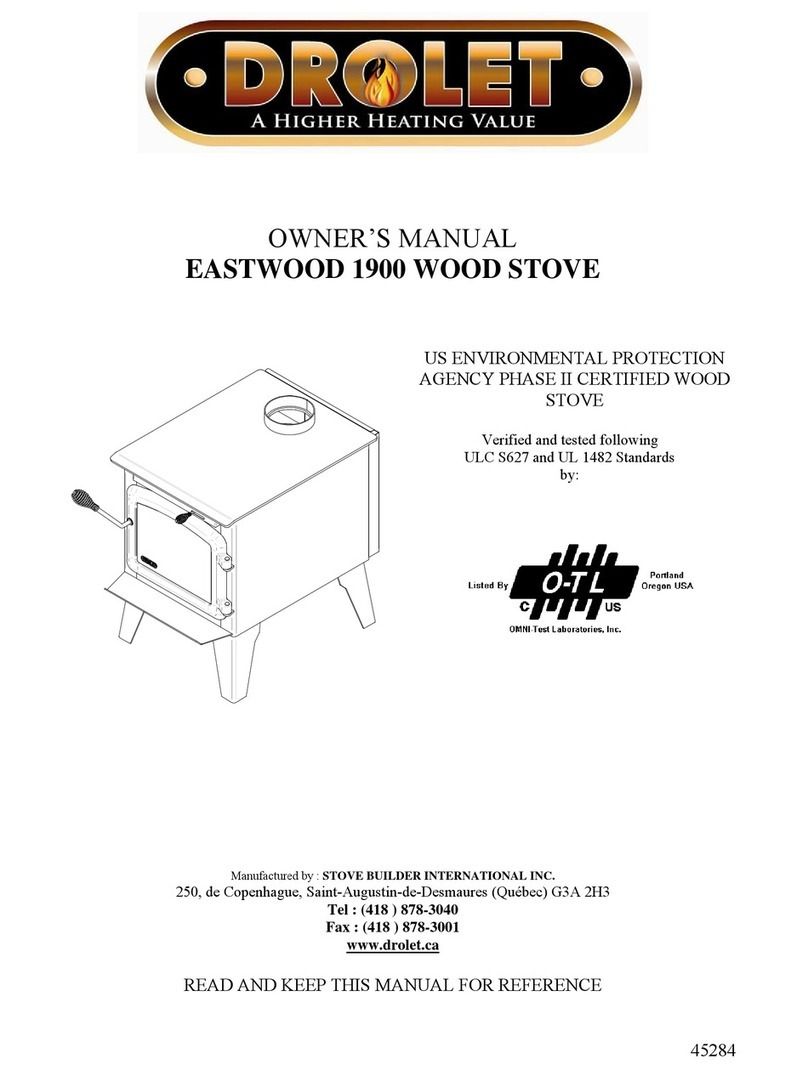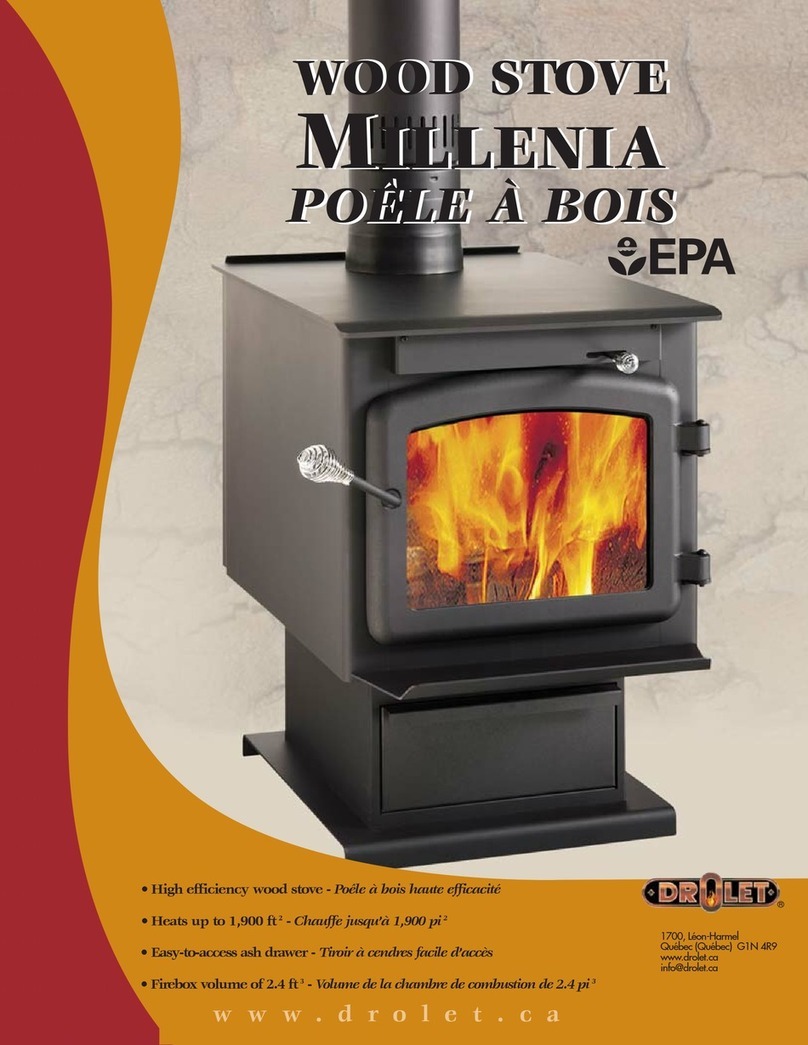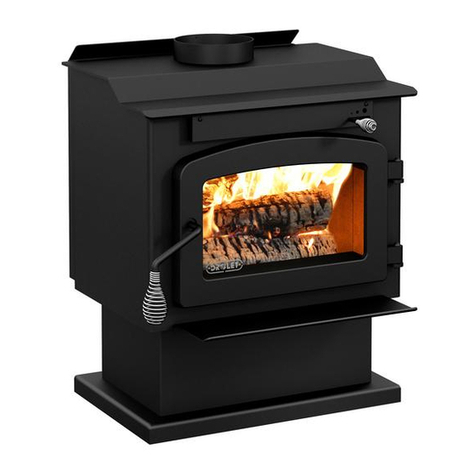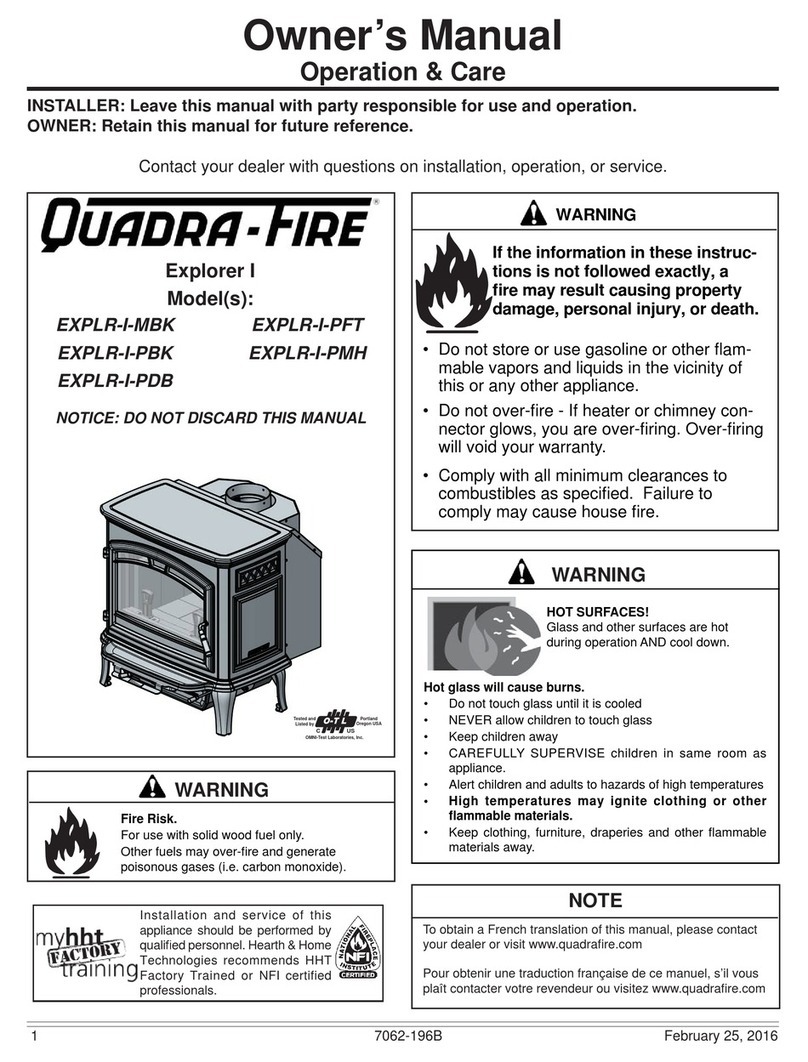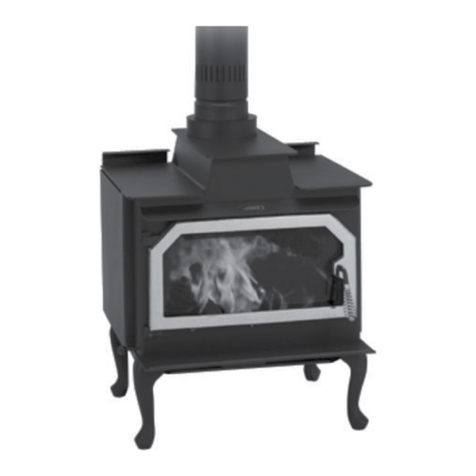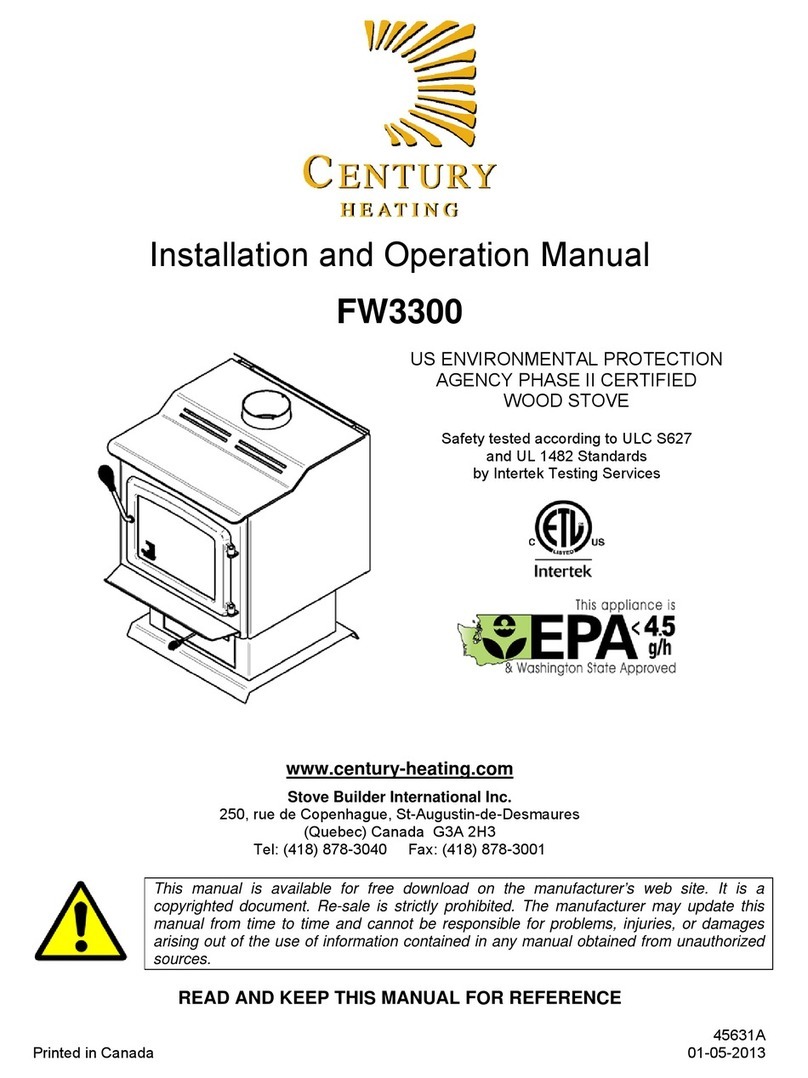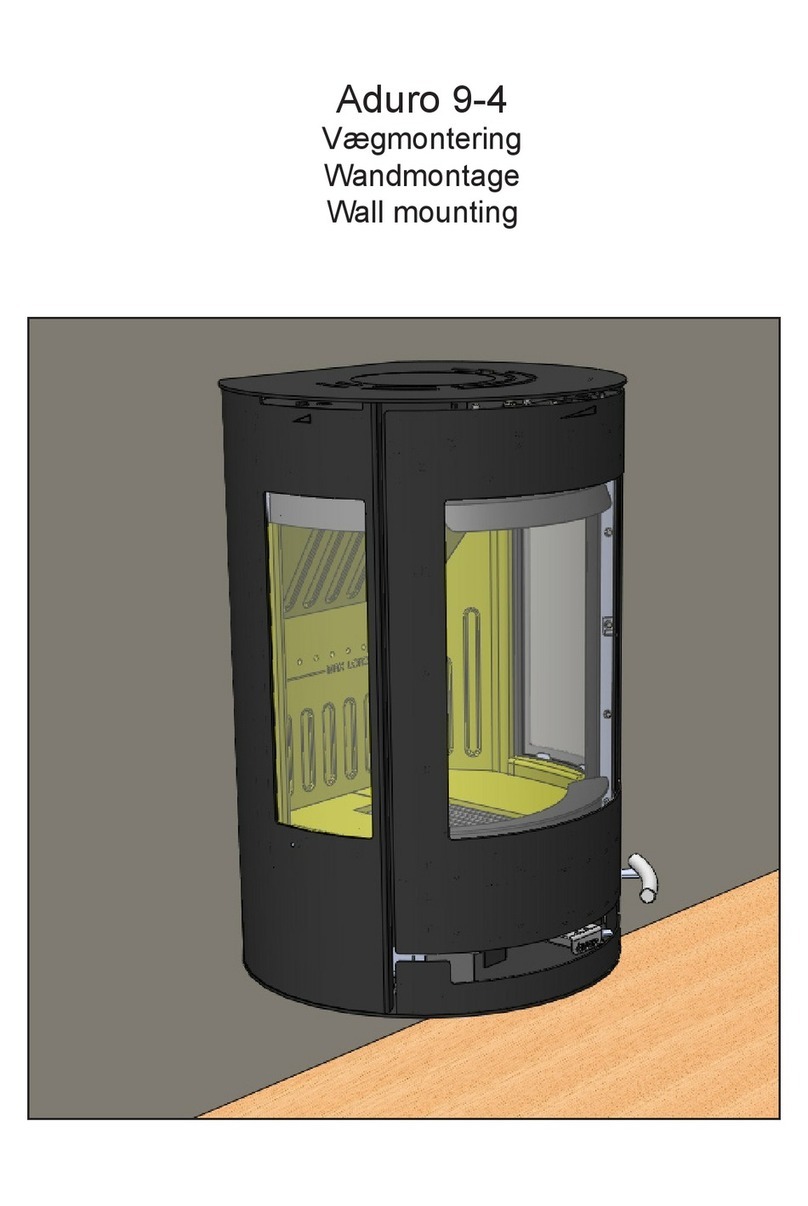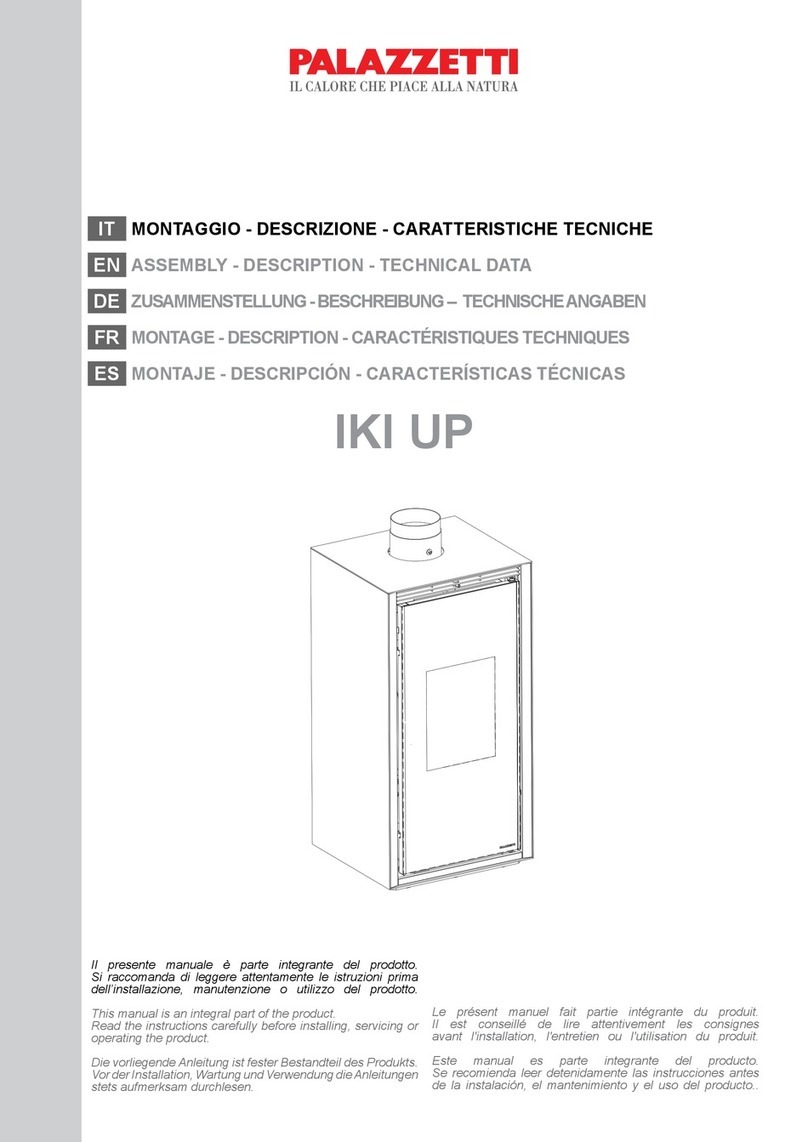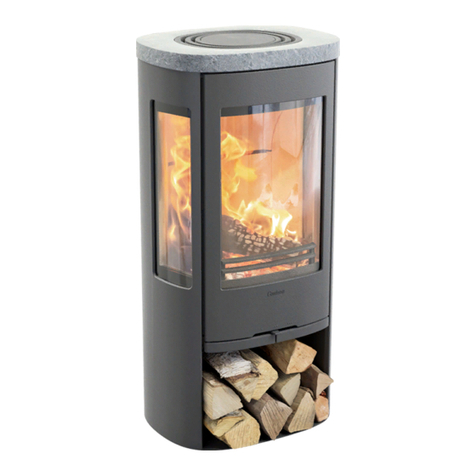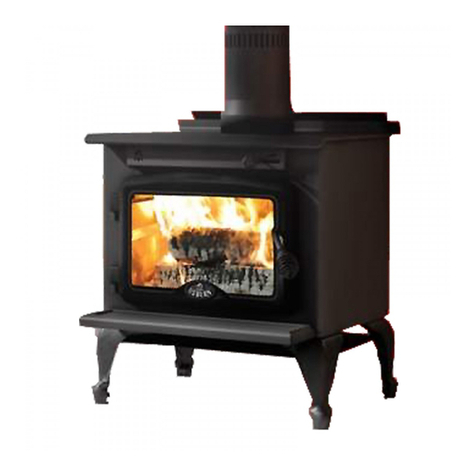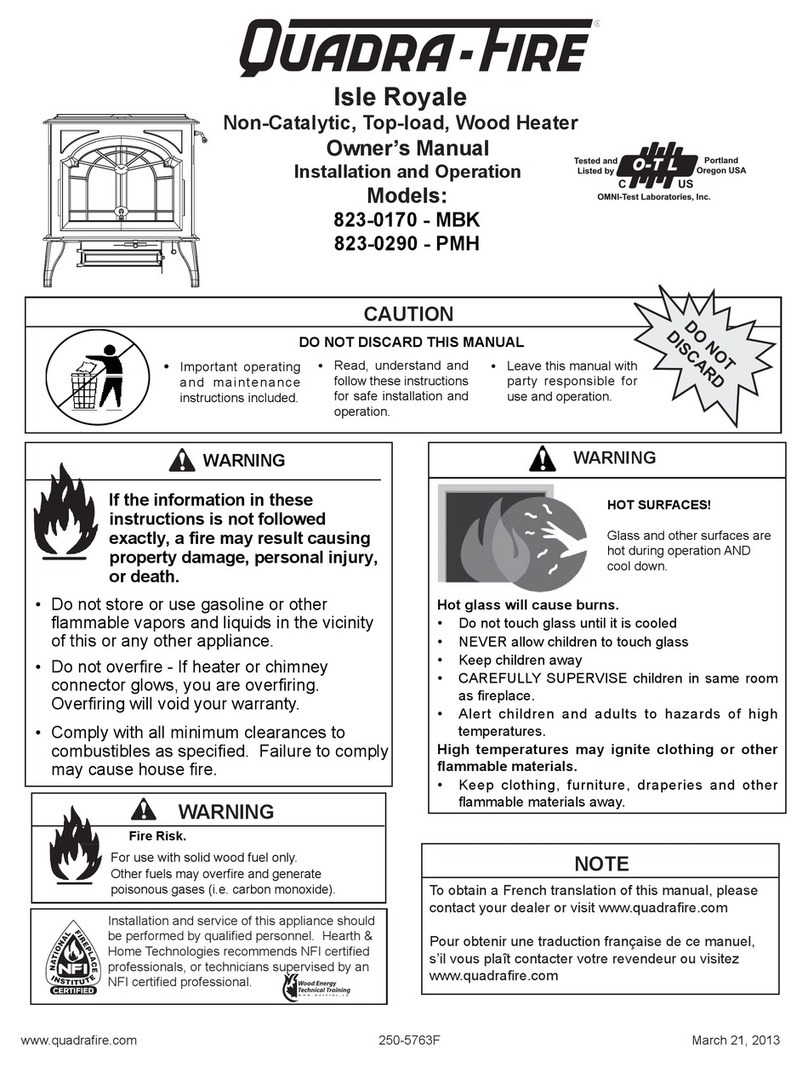
If you are using a masonrychimney, it is important that it bebuilt in compliance with the specificationsof the
Building Code. It must be lined with fire claybricks, or claytiles, sealed together with fire cement, or have a
listed solid fuel burning stainless steel liner. Round chimneys are the most efficient.
The interior diameter of the chimney should be identical to the stove's smoke exhaust. A chimney which is
too small may cause draft problems, since it may not have the required volume to properly evacuate the
quantity of smoke resulting from the combustion. A chimney whish is too large may also cause draft
problems. In fact, a largechimneywill be harder to warm-up and maynot reach high enough temperatures to
create a proper draft effect. Note that it is the chimney which creates the draft effect, not your stove.
Your stove's performance is therefore directly dependent on an adequate draft from your chimney.
The following recommendations may be useful for the installation of your chimney:
Do not connect your stove to a chimney serving another appliance.
The chimney must rise above the roof at least 3' (0.9 mm) from the uppermost point of contact. See
Figure 2.2.
The chimneymust exceed anypart of the building or other obstruction within a 10' (3.04 m) distance
by a height of at least 2' (0.6 m). See Figure 2.2.
The minimum overall height of the chimney system, measured from the stove top to the exterior
termination cap of the chimneyshould be at least 12' (3.66m). A chimneywhich is too shortmaylack
the “tunnel effect” required to obtain a proper draft.
Installation of an interior chimneyis always preferableto an exterior chimney. Chimneys constructed
outside of the home on an exterior wall should be avoided if possible, especially in colder climates.
The gas which circulates into an interior chimneywill coolmoreslowly, thusreducingthebuild-upof
creosote and the risk of flue fires.
All else being equal, cooler chimneys will have less draft than hotter ones. This problem will be
amplified if the chimneyis excessivelylong. A chimneywhich is excessivelylongmaybeveryhard to
warm-up due to its higher volume. A cool chimney may even down draft (reverse flow) due to the
difficulty in heating it up to operating temperature while trying to evacuate the stack gases.
If an exterior chimneyis used, the best results will be obtained byusing aconnector verticallyoffthe
unit to the highest possible point before elbowing off horizontally to the exterior chimney. For
efficiency and safety reasons the stove must not be installed with an insulated chimney connected
directly to the appliance.
Using a fire screen at the extremityof the chimneyrequires regular inspection in order to insurethatit
is not obstructed, thus blocking the draft. It should be cleaned when necessary.




















